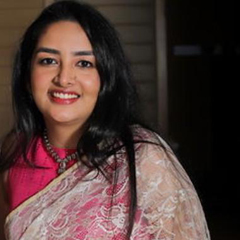Seven unique festivals and rituals from across India

Mail This Article
India is an amalgamation of cultures, religions, rituals and people, a constantly evolving kaleidoscope that shifts in the blink of an eye. However, each of the moving pieces that make up different parts of the country have their own flavour, some a little more unique than others.
1. Puli Kali, Kerala - A performance during the festival of Onam, Puli Kali translates to “playing at being tigers'' where people either dress up and paint themselves to look like big jungle cats or wear the uniform of the hunter. They then go on to perform a dramatized hunt, enacted to the beat of heavy drums and music. This is a popular event in many schools across Kerala and many resorts and hotels even pay performers to put on this show for tourists.
2. Nag Panchami - A festival celebrated across India, Nag Panchami is the worship of snakes and snake figures. As a part of the celebrations, snake figurines made of silver, wood or stone are bathed with milk, flowers and water and snake charmers are called upon so that people can worship real snakes, most often cobras. These snakes are given milk as well, and devotees pray to them for the well-being of their families. As the legend goes in the Mahabharata, the sage Astik stopped King Janemajaya from killing the race of Nagas or snakes, and so this is why Nag Panchami is celebrated. Snakes have always had a history and part to play in Hindu mythology, and this day marks their celebration.
3. Thimithi, Tamil Nadu - A week before the festival of Deepavali, or Diwali, Tamil Nadu hosts a fire walking festival, in honour of Draupadi, the wife of the Pandavas from the Mahabharata. Legend has it that Draupadi walked through fire to prove her purity, coming out unhurt and unscathed. This has inspired devotees from across the region to celebrate and try to recreate her feat. The festival starts off with an enactment of scenes from the Mahabharata, as well as rituals celebrating the marriage between Arjuna, the second Pandav brother and Draupadi. There is also a simulated sacrifice of a Hijra (no humans are harmed during these festivities). On the last day of the festival, a large fire pit is prepared for all devotees who try to prove their devotion to Draupadi by walking across the pit and coming out unscathed. While many do suffer from burn injuries, they also experience feelings of euphoria and happiness emerging from the pain.
4. Karama Festival - This is a festival celebrated by states in the central and eastern part of India such as Jharkhand, Bihar, Madhya Pradesh, Odisha and West Bengal. A harvest festival, it is a time when seeds are planted and locals go into forested areas to worship the Karam Tree, a representation of the God of power and youth. After worshipping the tree, the branches are cut and brought back to the village, where they are planted and decorated with flowers. After dancing and music, and some more prayers and festivities, the branch is immersed in water the next day. This festival is a prayer to mother nature to increase the fertility of the land and produce a good harvest.
5. Kite Festival, Ahmedabad - The Kite Festival, also known as Uttarayan is celebrated across the state of Gujarat, most exuberantly in the capital of Ahmedabad. Uttarayan symbolizes the end of the winter season and the onset of the harvest, and usually takes place on January 14th of every year. It originated as a festival celebrated by farmers. The manufacturing of paper kites starts months in advance and on the day of the festival, a large kite competition takes place, with people trying to cut others’ kites out of the sky. Locals also celebrate with snacks and sweets like Chikki (peanut brittle) and Jalebi.
6. Ganga Puja, Kodava Wedding Ritual - While most Indian weddings have their own rituals and festivities depending on the region, The Kodava wedding, or Coorg wedding has one ritual that is unique to say the least. Ganga Puja, is the ceremony after the wedding, where the bride is welcomed into her husband’s family. However, she has to face a few trials first. The bride has to take her first few steps into the house, with a pail of water on her head, accompanied by a few unmarried girls from her husband’s family. However, all the men of the house prove to be roadblocks to this task, by dancing to traditional Kodava music in front of her for hours on end, preventing her from entering the house. The bride has to prove her dedication to her marriage by waiting patiently without spilling the water.
7. Mangala Dosha - this is a Hindu superstition derived from the Hindu calendar, which predicts that people born “Manglik” or under “Mars” in Hindu astrology, cannot marry anyone who is a non manglik, as that will lead to an unhappy marriage or an early death for the person they marry. To prevent this from happening, the “Manglik” person usually undergoes a first marriage to an inanimate object such as a pot or a tree. The kind of marriage ceremony depends on the nature of this first spouse. It is believed that all the bad luck and unhappiness transfers to the inanimate object or plant, thus leaving the Manglik person free to marry a human, without the weight of superstition.
India is host to many such distinctive rituals, festivals and traditions that range from simple and sweet to hugely controversial at times, but each one is nevertheless representative of India as a whole, a rare mix of community and individuality, a country filled to the brim with culture, completely unique.


